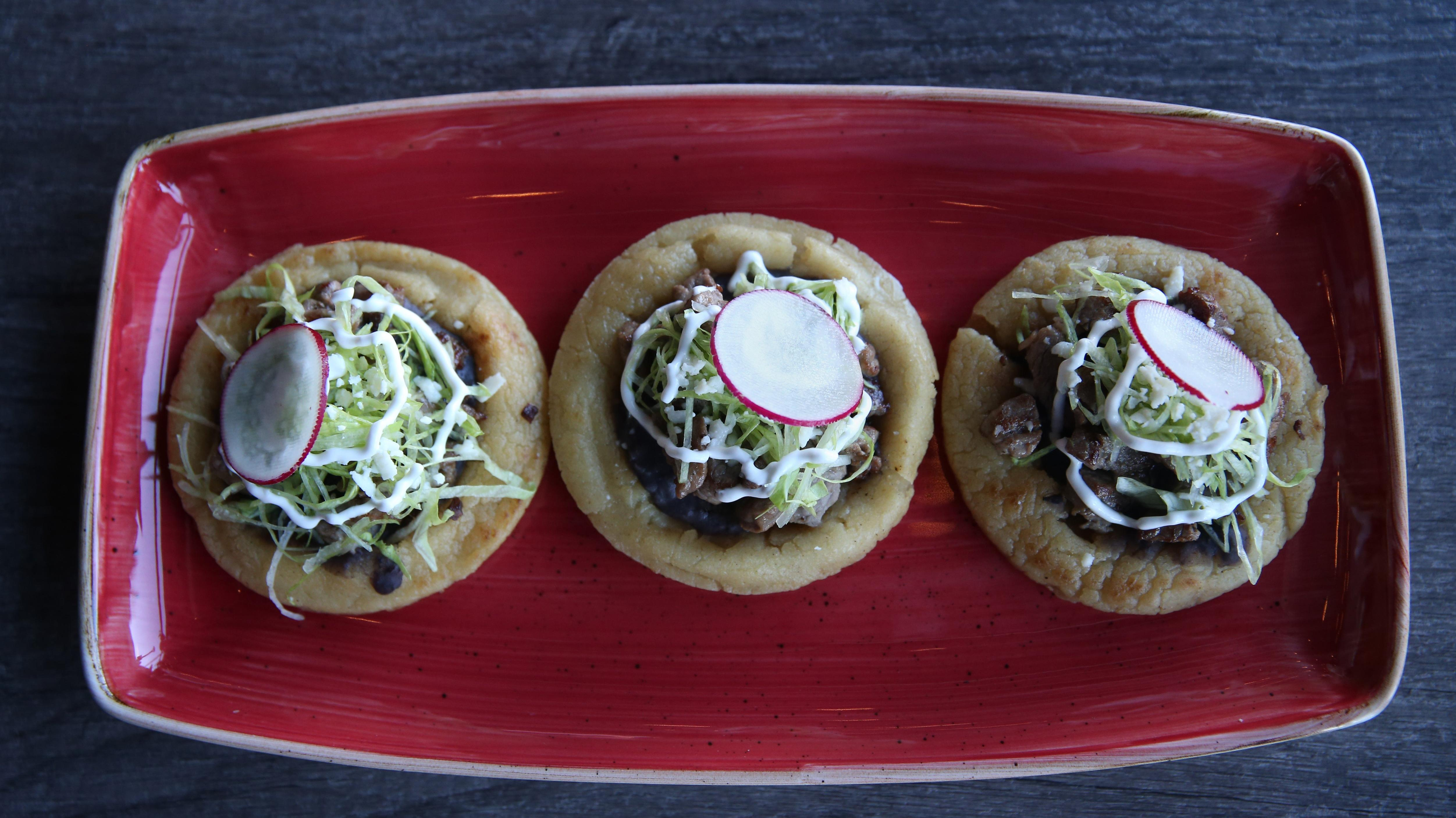The Best Thing You're Not Ordering At A Mexican Restaurant
Sopes are an appetizer, a main course, and a snack all in one. Don't sleep on these next time you dine out.
We may receive a commission on purchases made from links.
At any Mexican restaurant, you're going to find some go-to foundational dishes such as a taco dinner, a torta dinner, or enchiladas. These are all delicious options (my mouth watered just as I typed them out), but I think it's time to put the spotlight on a lesser known Mexican menu item: sopes.
Sopes are small, round corn-flour cups topped with a variety of ingredients. Native to Mexico, they are hand-formed from corn flour turned to masa that is soft but firm once cooked.
Sopes can usually be found on the menu, but they're not what most people look for or think of when they say, "Hey, let's get Mexican food." Tacos and tortas are more widely recognized in American pop culture, but in Mexico sopes are a street food to be reckoned with.
"They're antojitos, so street vendors definitely sell them," says Claudia Alarcón, a writer specializing in gastronomy and foodways. Antojitos, translated as little cravings, are snacks usually sold by street food vendors in Mexico, but they can also hold their own within the a la carte section on restaurant menus. You could also think of them as appetizers to be enjoyed as an individual or as a group.
What are sopes?
Corn, with its tiny, golden nuggets, carries almost no nutritional value whatsoever, and yet it couldn't be more important to traditional cuisines of Mexico. I've said it once and I'll say it again: You can trace much of North and Central American food history back to corn. Corn is king and has reigned for many years. Sopes are another example of this, as they are essentially small shells of corn flour formed with raised edges to hold in ingredients. Alarcón describes them as a humble, simple food.
Sopes can be topped with a plethora of things including beans, chicken, carnitas, Mexican chorizo, lettuce, tomato, cheese, salsa, avocado, and just so much more. The possibilities are nearly endless, and their versatility is just one of the many things that make these handheld corn boats so delicious.
Both its raised edges and its thickness sets the sope apart from other antojitos. The slightly bowl-like center allows you to pile the toppings high, and the thickness helps it withstand everything you pile onto it. Sopes can be more filling than tacos because the dough is heavier than a tortilla, but at the same time they can be an appetizer depending on how small you make each one. They also hold together better than a tostada, which breaks apart into smaller pieces as soon as you bite into it.
You always have the option of eating sopes with a fork and knife, but they're truly meant to be eaten by just picking one up and taking a big bite.
My go-to order at Mexican restaurants has long been two shredded chicken sopes with beans, lettuce, tomato, avocado, a squirt of lime, a little sour cream (not a huge dollop), and green salsa for just a little bit more flavor. Two sopes is the perfect serving size, because if I'm truly hungry I'll eat both, but if I don't want to fill up too quickly before my entree arrives, I can take home leftovers; one take-home sope is a great snack or meal for later.
"They're the kind of thing you might have at a cantina with some beer," Alarcón says, "or you might have it for late night supper."
Go ahead, try a sope
If you're one of those people who looks forward to a weekly taco night, I definitely suggest switching things up with a sope night. I'm sure you're thinking that because the base must be formed of masa, it's more work than your usual taco night spread, which just involves a bag of supermarket tortillas. Fear not! Premade sopes do exist, and if you buy them that way you're not doing it wrong. These sopes are pre-formed into the desired cup shape, are uniform in size, and can be found at most grocery stores that have other Mexican food items.
If you buy pre-made sopes, you can fry them, grill them, or bake them. Heat them up in whatever way sounds good to you and then just load up the toppings. The more traditional option would be to fry them, and that's what I tend to do.
How to make sopes at home
If you want to make sopes by hand, hats off to you, because that's going to be a bit more involved. To make the sopes yourself, you only need corn flour, water, and a pinch of salt, writes Mexican cook Maricruz Avalos.
From there, though, it's all on you to mix up the ingredients and get the right consistency. Dough too crumbly? Add more water. Dough too sticky? Add more corn flour. Once you have a dough that is smooth and pliable, you can take a little ball of dough and flatten it down to the thickness you want.
The hardest part will be to form the edges that make a sope what it is. You'll need to cook the sope halfway, then remove it from the heat to form the edges by hand. Protect your fingers with a paper towel or gloves and then return the partially cooked, newly shaped sope to the oven (or whatever cooking method you're going with). After that, it's all toppings and good eats.
The next time you order Mexican food at a restaurant or consider trying a new recipe at home, I suggest sopes. They don't get enough love.
